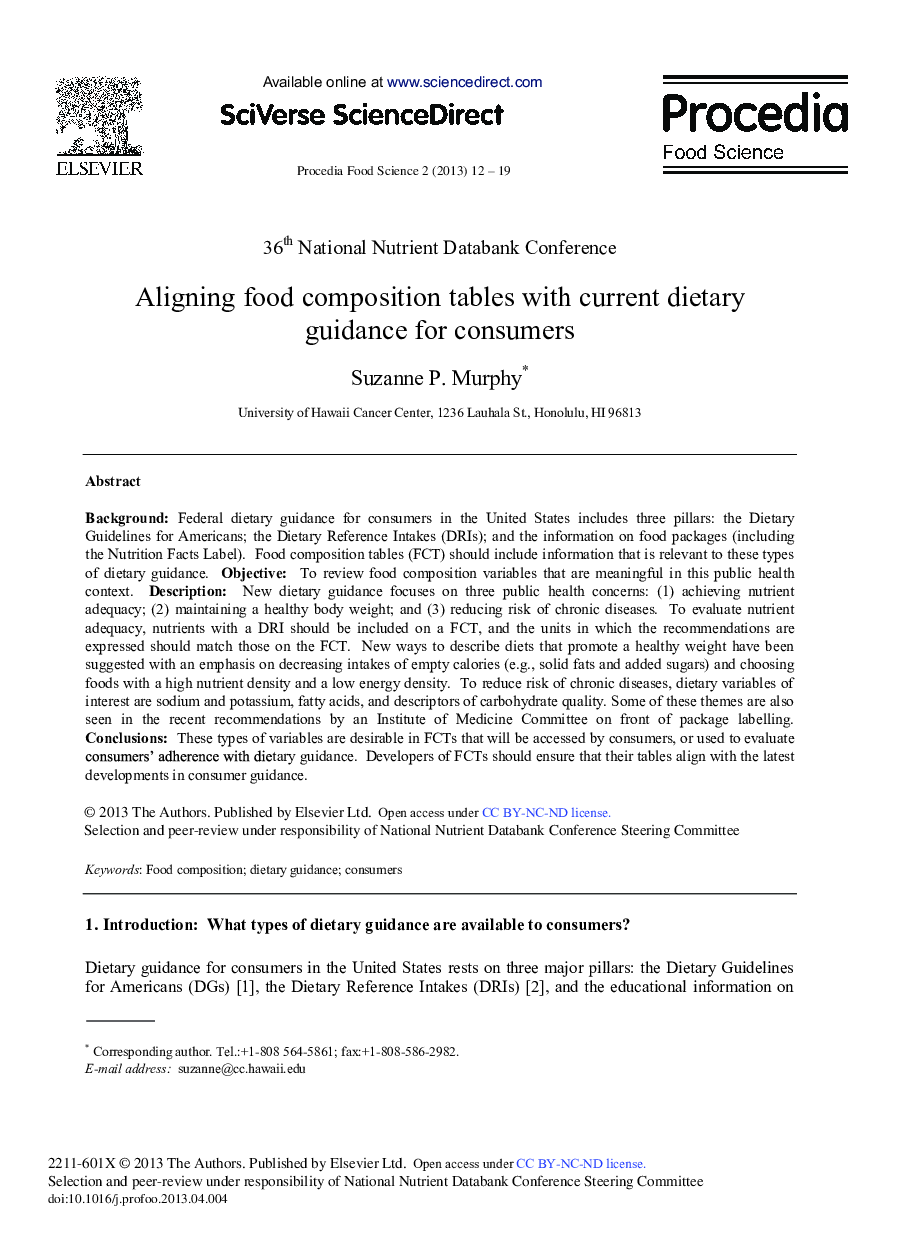| کد مقاله | کد نشریه | سال انتشار | مقاله انگلیسی | نسخه تمام متن |
|---|---|---|---|---|
| 1265483 | 1496854 | 2013 | 8 صفحه PDF | دانلود رایگان |
BackgroundFederal dietary guidance for consumers in the United States includes three pillars: the Dietary Guidelines for Americans; the Dietary Reference Intakes (DRIs); and the information on food packages (including the Nutrition Facts Label). Food composition tables (FCT) should include information that is relevant to these types of dietary guidance. Objective: To review food composition variables that are meaningful in this public health context. Description: New dietary guidance focuses on three public health concerns: (1) achieving nutrient adequacy; (2) maintaining a healthy body weight; and (3) reducing risk of chronic diseases. To evaluate nutrient adequacy, nutrients with a DRI should be included on a FCT, and the units in which the recommendations are expressed should match those on the FCT. New ways to describe diets that promote a healthy weight have been suggested with an emphasis on decreasing intakes of empty calories (e.g., solid fats and added sugars) and choosing foods with a high nutrient density and a low energy density. To reduce risk of chronic diseases, dietary variables of interest are sodium and potassium, fatty acids, and descriptors of carbohydrate quality. Some of these themes are also seen in the recent recommendations by an Institute of Medicine Committee on front of package labelling. Conclusions: These types of variables are desirable in FCTs that will be accessed by consumers, or used to evaluate consumers’ adherence with dietary guidance. Developers of FCTs should ensure that their tables align with the latest developments in consumer guidance.
Journal: Procedia Food Science - Volume 2, 2013, Pages 12-19
